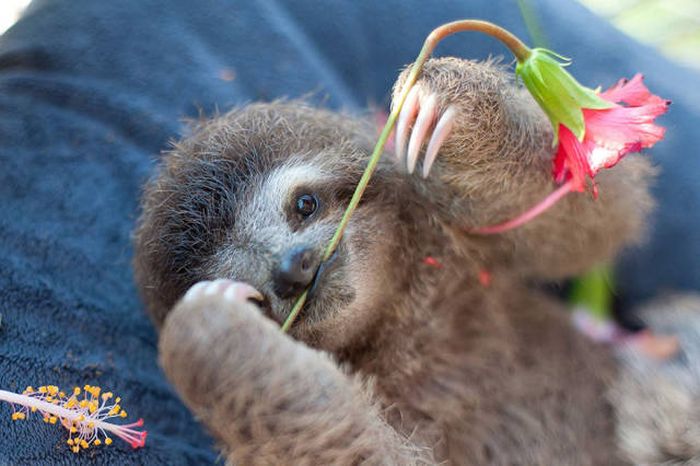|
|
Baby Sloth
|
It had been thought that sloths were among the most somnolent animals, sleeping from 15 to 18 hours each day. Recently, however, Dr. Neil Rattenborg and his colleagues from the Max Planck Institute for Ornithology in Starnberg, Germany, published a study testing sloth sleep-patterns in the wild; this is the first study of its kind. The study indicated that sloths sleep just under 10 hours a day.
They go to the ground to urinate and defecate about once a week, digging a hole and covering it afterwards. They go to the same spot each time and are vulnerable to predation while doing so. The reason for this risky behavior is unknown, although some believe that this is to avoid making noise while defecating from up high that would attract predators. Consistent with this, they reportedly relieve themselves from their branches during storms in rainy season. Another possible explanation is that the middens provide the sloths with one of their few methods of finding one another for breeding purposes, since their sense of smell is far more acute than their eyesight or hearing. It has also been pointed out that individual sloths tend to spend the bulk of their time feeding on a single "modal" tree; by burying their excreta near the trunk of that tree, they may help nourish it.
Infant sloths normally cling to their mothers' fur, but occasionally fall off. Sloths are very sturdily built and rarely die from a fall. In some cases they die from a fall indirectly because the mothers prove unwilling to leave the safety of the trees to retrieve the young. Females normally bear one baby every year, but sometimes sloths' low level of movement actually keeps females from finding males for longer than one year.
Almost all mammals have seven cervical vertebrae or "neck bones" (including those with very short necks, such as elephants or whales, and those with very long necks, such as giraffes). The few exceptions include manatees and two-toed sloths, which each have only six cervical vertebrae, and three-toed sloths with nine cervical vertebrae.
|
|









